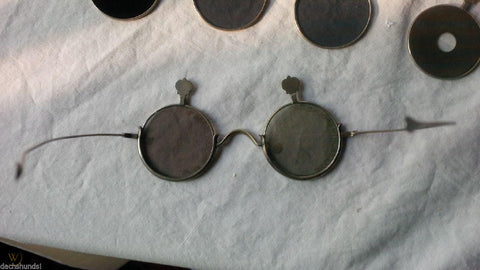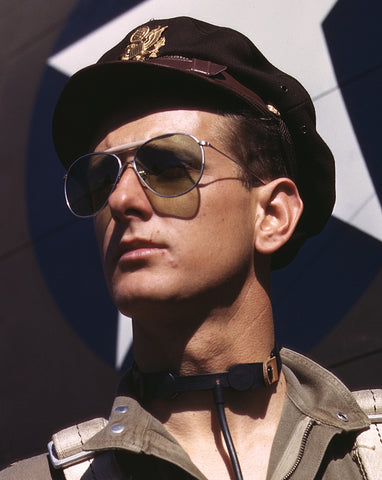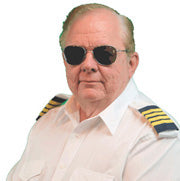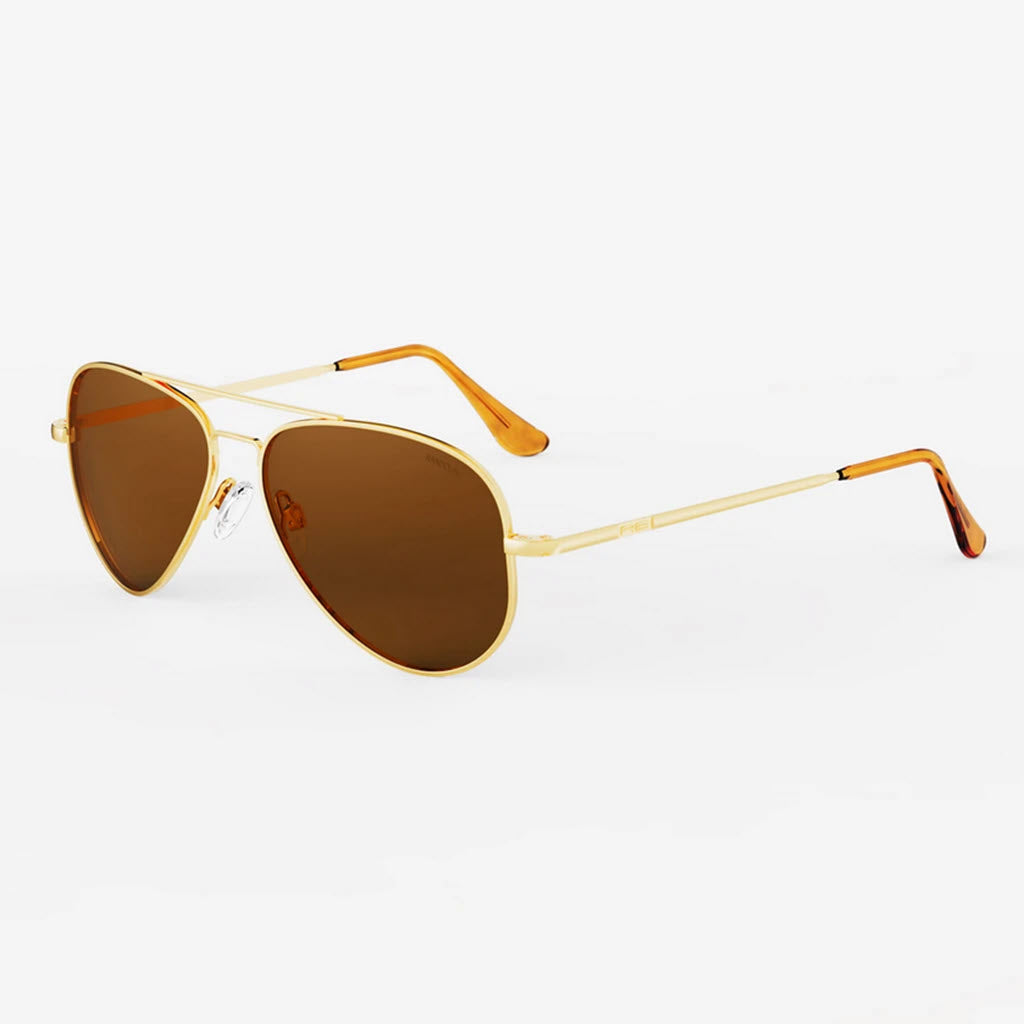The History of Aviator Sunglasses
Aviator sunglasses are one of the most sought after, trendy and important fashion accessories to have for everyday use.
They are also valuable for protecting your most important sensory asset - your eyes.
But where did they come from and why are they so popular?
A little history may help.
The Very First Sunglasses

When it comes to the history of sunglasses we need to start with the history of sunglasses themselves.
Way back in history the Inuit peoples were hunter/gatherers in the northern part of the North America Continent.
The sun is low on the horizon in the northern latitudes and presents a serious challenge to anyone outdoors trying to accomplish anything.
This is because of the direct line of sight of bright sunlight rays go directly into their eyes.
The harsh glare was intensified by reflection off of the water, snow and ice the early Eskimos faced.
It was important that they spend the daylight period to hunt and gather food for the coming long, dark winter, so protecting their eyes and making it easier to see their prey was essential.
Imagine an Inuit wife being frustrated at her husband complaining about red, sore eyes and being tired after hunting all day.
We all know how that works, right?
Well, using what was available, an early Inuit sliced a cross section of a walrus tusk, flattened it and then made slits in the material.
He then used a bit of string to tie around the back of his head and - Viola! - sunglasses were invented!
Ingenuity at work!
Early Aviator Sunglasses
The earliest form of aviator sunglasses were made by the American Optical Company (c. 1876) with a variety of tinted lenses in blue, smoke, pink, and amber shades.
In 1913 American Optical secured the rights to Crookes glasses.
At the same time the study of Ultra-Violet protection became an exact science.

The Crookes glasses sold then were either clear lenses or various darker shades, obviously for extended outdoor usage.

It was in Turin, Italy in 1917 in a small courtyard in Via Caboto where photographer and optician Giuseppe Ratti began to make technically advanced glasses.
These were designed to meet the needs of pilots and sports car drivers who required comfort, protection and optimum vision.
Thus Protector glasses were born.
They had round smoked lenses with rubber edges and were attached to the head with elastic bands.
Soon they were adopted by early military aviators and pilots in the Italian Military Aviation units.
Intuition, ingenuity, innovation and quality made Protector aviator glasses the choice of several air forces around the world, including the Army Air Corp in the United States.
Protector glasses received notice when Major Gabriele de Annunzio (for whom a model was made to measure) and Captain Natale Palli wore them on their historic flight over Vienna on 9 August 1918.
Also, Francesco De Pinedo wore them on his transatlantic flight that lasted some 193 hours!
During this period they were worn by numerous flying, driving and motorcycling aces including D'Annunzio, De Pinedo, Ferrarin, Chiron, Nazzaro, Fangio, Opessi, Bolognini and Ghersi to name but a few.
As the popularity of the Protector aviator glasses grew Ratti formed Persol which remains to this day as an Italian luxury eyewear company.
The name Persol is derived from per il soleâ, which in Italian means for the sun.
Fast Forward To The 1900's
 Amelia As aviation takes off after the Wright Brother's first manned powered flight many different models of aircraft were manufactured as more and more people took off for the wild blue yonder.
Amelia As aviation takes off after the Wright Brother's first manned powered flight many different models of aircraft were manufactured as more and more people took off for the wild blue yonder.
The number of new aircraft and aircraft improvements exploded during this time period, and the lure of flying captchured the imagination of the public.
These early pilots quickly discovered how difficult it was to see other aircraft when flying, oil flew back into their eyes from the engines and their eyes were red and sore after each exhausting flight.
Flight goggles were invented to keep the oil flying off the engine from getting into the pilot's eyes.
Those famous white scarves were used to wipe the oil off the lenses of the goggles.
Soon tinted lenses were used to reduce the effects of sun glare on a pilot's vision.
World War I
By 1917 it was clear that war was on the horizon and the U.S. government had identified Bausch & Lomb as the only American company capable of producing sufficiently high quality glass for lenses in significant quantities.
At the same time the American Optical Company was chosen to design and build 8 mobile optical units to support U.S. troops and Allied Forces in Europe with frames to hold the Bausch & Lomb lenses along with the machinery for the fitting, filling and distribution of prescription glasses and sunglasses.
There were a record 2½ million glasses and sunglasses were furnished to the U.S. Government for the WWI effort.
In 1924 Protector obtained the first of 14 international patents. Composed of 41 parts requiring 43 different assembly procedures, Protector glasses were also adopted by the Swiss Military Department in 1927 after careful analysis.
Subsequent development of the Protector model, guided by an intuition and determination to create truly revolutionary sunglasses in terms of quality and ease of wearing, led to the creation of the Persol trademark.
World War II Looms On The Horizon

During the early 1930's the American Optical Company was supplying the Army Air Force with aviator goggles, including the U.S.A.C. Goggle Type B-6 and later the B-7 model.
The goggles were fitted with severl different colored lenses, including the green calobar, amber, smoke (neutral gray) and clear lenses.
At the same time Bausch & Lomb created early sunglasses for World War I pilots World War II was looming on the horizon.
Thousands of aircraft would be airborne at very high altitudes over enemy territory and it was essential pilot's eyes be protected and that they could spot other nearby aircraft.
In 1936 Bausch & Lomb then created the "Ray Ban" aviator sunglasses for pilots using polarizing technology developed by Edwin H. Land.
These aviator sunglasses were called "Ray Bans" because they "banned" light rays of certain colors from reaching the pilot's eyes and keeping them safe.
Aviator Sunglasses Become A Fashion Statement
Soon a Woolworth's store on the New Jersey boardwalk began selling these Ray Ban aviator sunglasses to the general public.
They quickly became very popular as a fashion statement.
Film stars found working under the harsh studio lights made their eyes hurt and become red.
They started wearing sunglasses to protect their eyes when not on camera.
They also began wearing them outside the studio and soon fans wanted them too!
Since then sunglasses have been a popular choice for many people who love the look for themselves.
Recent History
In the 1960s American Optical introduced the current rectangular shape (sometimes called "Navigators") commonly worn by military pilots.
These became more commonly known as "Aviators" because of their military heritage.
As knowledge about the effects of UV radiation on pilot's eyes increased, and as the performance of modern military aircraft increased, the U.S. Department of Defense (DoD) became concerned about the performance and durability of their pilot's sunglasses.
After much research they established the Mil Spec 25948J standard for the ideal military aviator sunglasses for pilots.
Also known as the HGU-4/P, the DoD wanted aviator sunglasses that would enhance target acquistion by 6.5-11%, have a VLT of 15% (plus or minus 2%), and a minimum visual acuity of 90%.
Since 1982 Randolph Engineering from Randolph, MA has been the prime contractor for providing military aviator sunglasses to the DoD.
Today
Today aviator sunglasses are everywhere it seems, but how can you tell the good ones from the bad?
Is it important to know, and are good sunglasses worth the extra money?
There are many manufacturers of aviator sunglasses like the ones I have mentioned above - American Optical (now known as AO Eyewear) and Randolph Engineering - but there are several other quality brands as well.
The Bolle sunglasses story began in the small town of Oyonnax, France in 1888.
There Seraphim Bolle started his company by first manufacturing combs and hair ornaments for the boxwood and horn indigenous to the region.
In 1956 Georges Bolle created the famous nylon 'cat-eye' sunglasses which are particularly popular for snow sports, golf, tennis and sailing.
Today extreme sports atheletes prefer Bolle sunglasses to any others. In the early 1980's Corning Incorporated developed Serengeti Aviator Sunglasses which use photochromic technology that enables quick adjustment of the visible light transmittance (VLT) to light variations.
In addition, Serengeti sunglasses use spectral control technology that provides high-definition contrast and color enhancement.
New aviator sunglasses brands continue to be introduced including the True Aviator Sunglasses by Scheyden.
Conclusion
Hopefully this has cleared up all of the misconceptions and brought some sense to aviator sunglasses history.
Keep your eyes cool and protected today my friends!


About John White a/k/a JetAviator7
p.s. Please share "The Best Aviator Sunglasses History" with your friends. Thanks!




Leave a comment
This site is protected by hCaptcha and the hCaptcha Privacy Policy and Terms of Service apply.